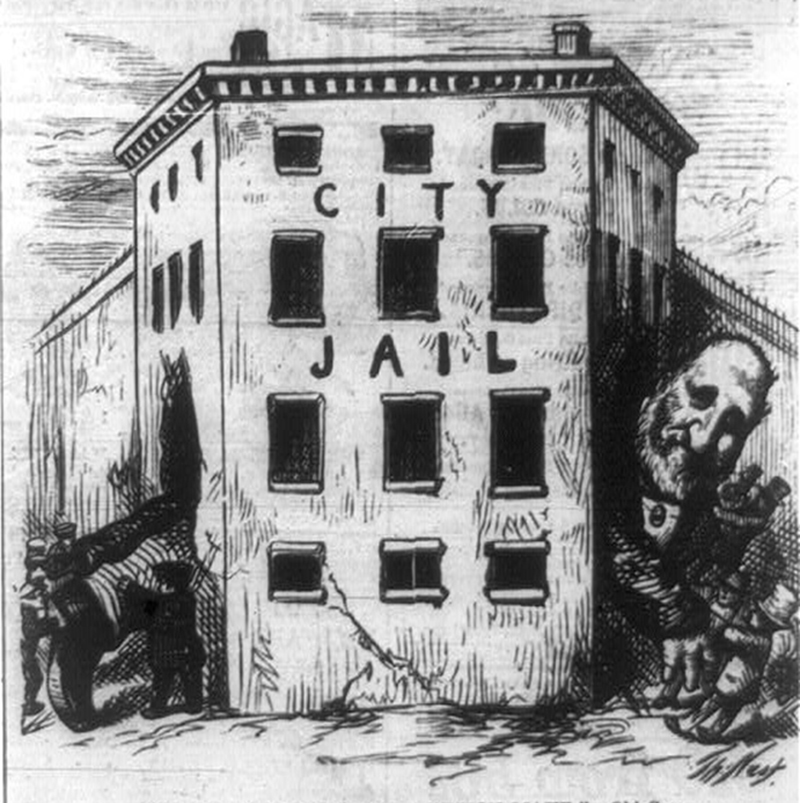6. Cartoons Led to Boss Tweed’s Downfall
 Image via Wikimedia: public domain from Library of Congress
Image via Wikimedia: public domain from Library of Congress
Tweed made many enemies due to his illicit criminal activities and thefts, but perhaps his most deleterious enemy was a Harper’s Weekly cartoonist named Thomas Nast. The German immigrant condemned Boss Tweed with scornful, insinuating caricatures that blatantly depicted the corrupt politician. In one famous rendering, Nast illustrates Tweed with his head replaced by a bag of money.
Tweed was wary of Nast’s widely seen illustrations. In response, he once stated, “My constituents don’t know how to read, but they can’t help seeing them damned pictures!” To resolve the matter, Tweed attempted to pay for Nast’s silence by sending a faux illustrator to his house with a promise of $500,000, should Nast move to Europe. However, the effort backfired, as Nast declined the bribe and intensified his efforts in his scathing cartoons, which sparked public outrage.
Intriguingly, Tweed’s ultimate downfall can be ascribed to Nast’s cartoons. In the mid 1870’s, during one of his home visits from jail, Tweed escaped to Cuba before moving on to Spain, where he worked as a seaman for two years. There, an American recognized him from Nast’s cartoons. Tweed was consequently sent back to the U.S, where he was sent to jail for the third time. Desperate to get out, he attempted to strike a deal with the state attorney general, agreeing to confess to all his crimes in exchange for his release. The attorney general, however, double-crossed Tweed after recording his entire confession, thus condemning Tweed irrevocably.





